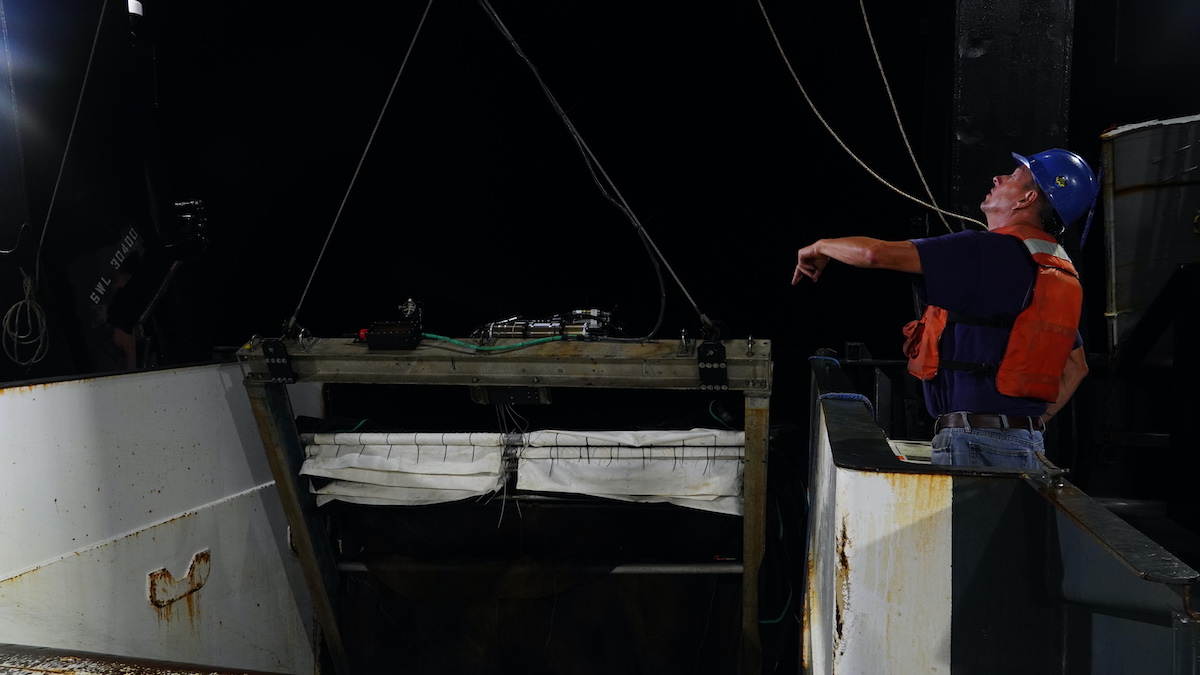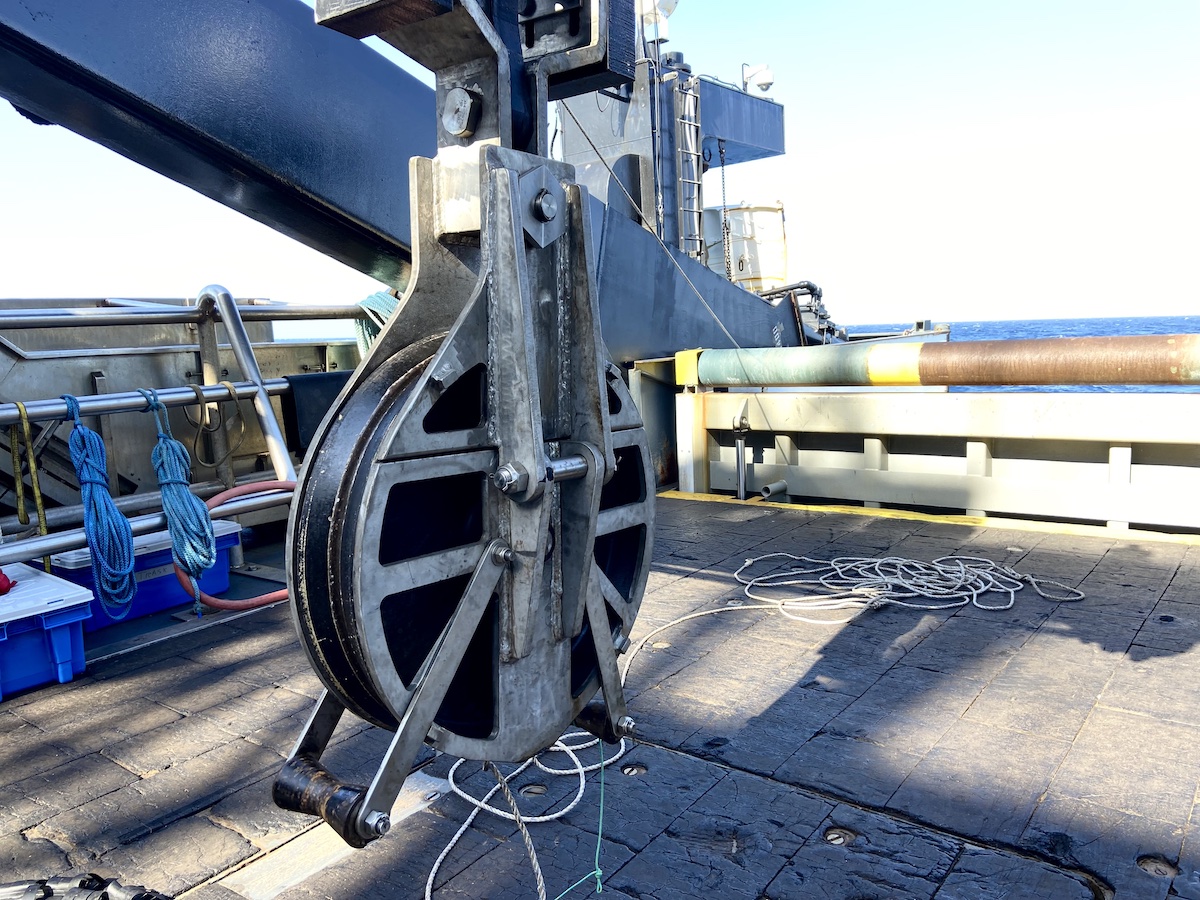Field Notes: Technical difficulties August 10, 2022
The science team aboard the NOAAS Bigelow hit a major obstacle today: the winch that’s used to deploy sampling nets and vehicles failed due to both mechanical and software issues.
While deploying either the MOCNESS or Deep-See, cables connected to the ship’s winch reel out from a giant spool on the stern. The cables rest on a level wind, a bar with a series of grooves on it, which needs to go very precisely into its position.
Though no one is quite sure how, during the second deployment of the MOCNESS-10 tow net, the level wind malfunctioned, rendering the winch inoperable. Additionally, the software failed to engage the brake correctly. Jumping into action, the engineering team released the brake manually, then moved the level wind themselves to position the cable correctly. The MOC was stuck at about 750 meters while engineers worked on a solution to haul it back on board.
The MOCNESS was successfully recovered in the end, but for now, tow net and Deep-See deployments are on hold while the engineering team figures out how to best move forward. Meanwhile, the scientists are pivoting to ship-based acoustic surveys, groundtruthing that data with midwater trawls and zooplankton images collected by the In-situ Ichthyoplankton Imaging System (ISIIS)–better known as Stingray.
Despite the obstacles, the engineers and science team are in good spirits. Bumps in the road are inevitable at sea, and those aboard Bigelow are determined to not let this setback stop them from collecting meaningful data.
Currently, the plan is to head back towards shore where troubleshooting and communications with technical experts will be easier.
“If we can still get the trawling done, then we can still get the biological samples,” says Mike Jech, a research fisheries biologist at NOAA’s Northeast Fisheries Science Center. “It’s a pretty big obstacle, but when you’re out here, you make the best of it. And as people work on it, new ideas come about what we can do.”








